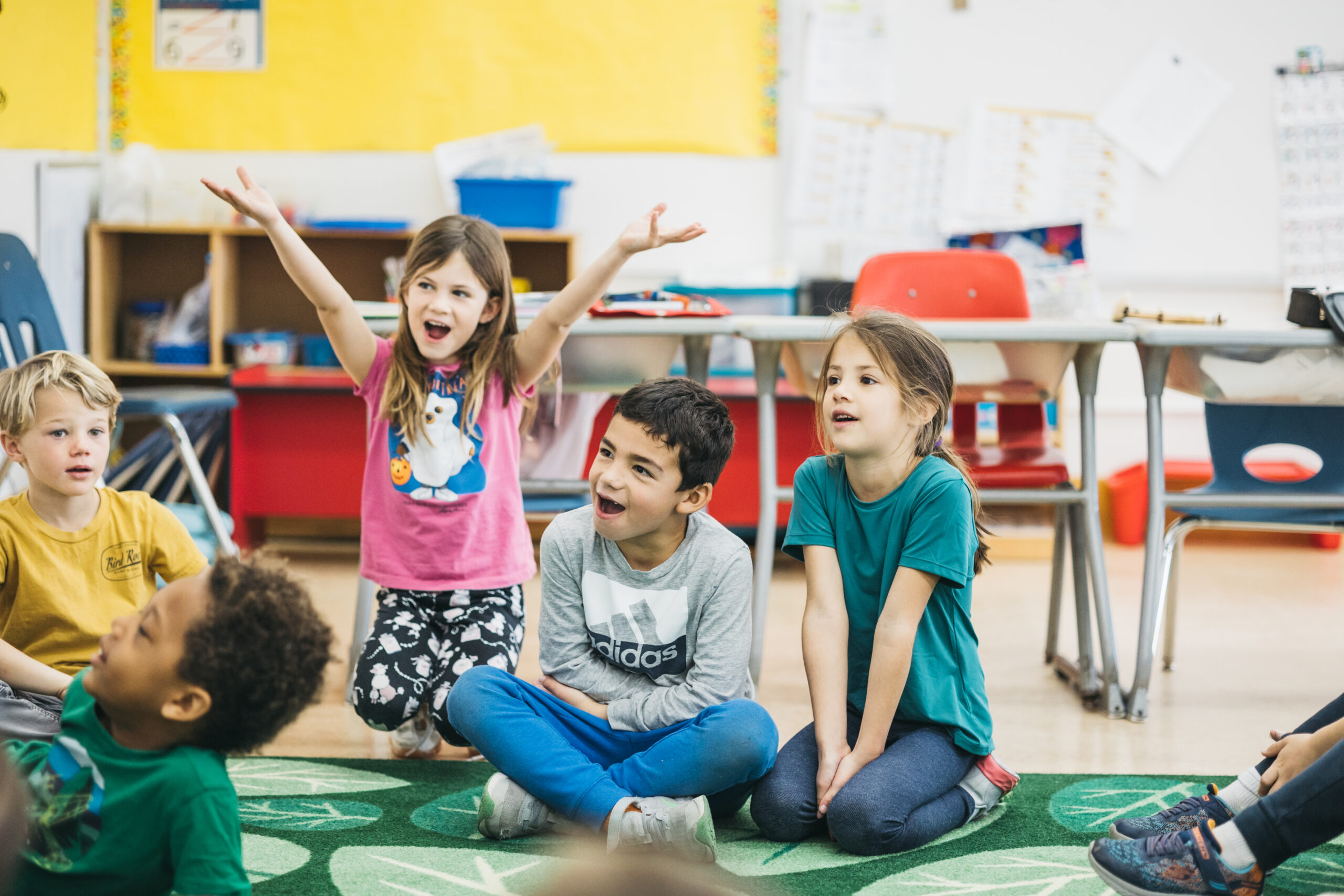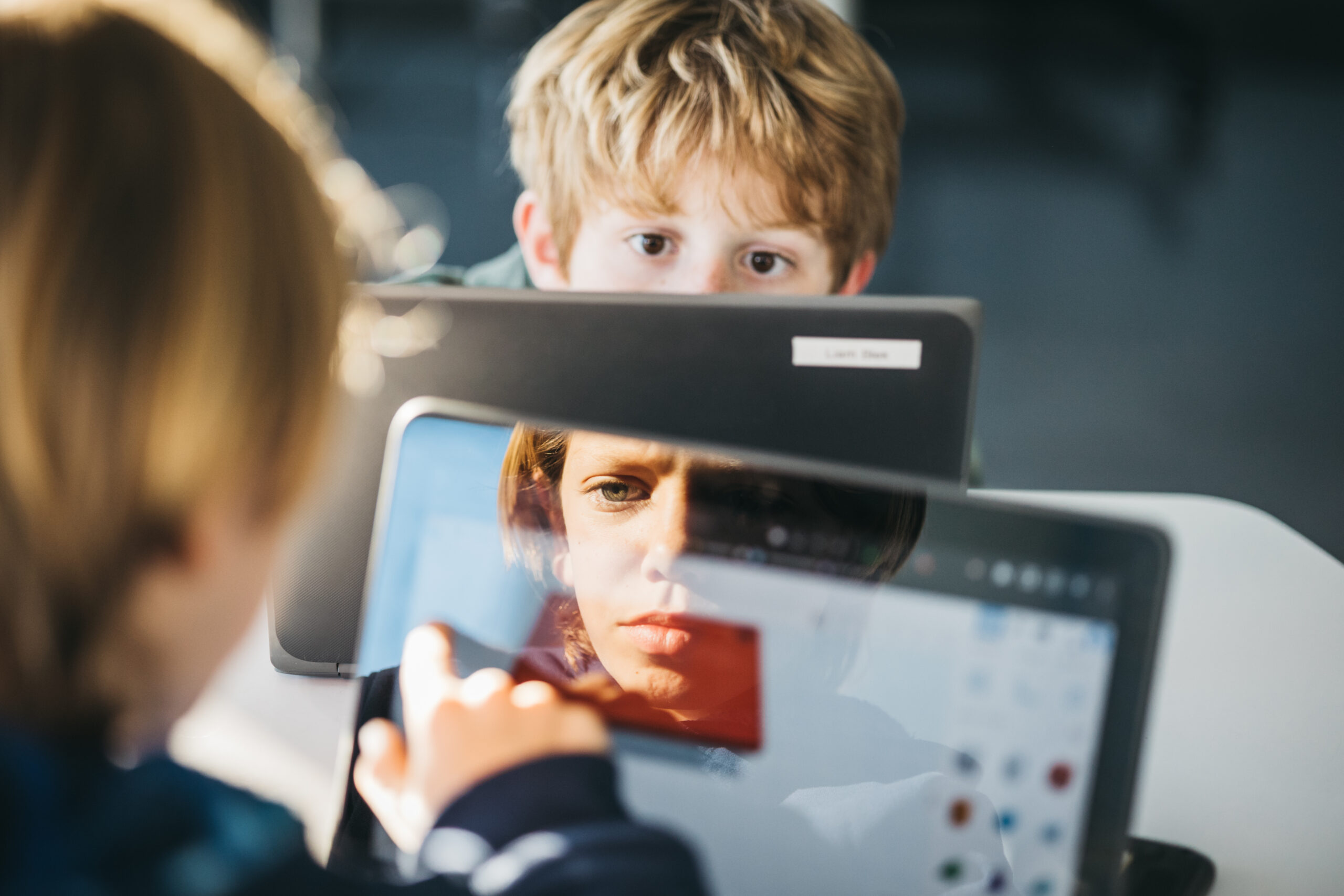We care about each other in all languages.
Social Emotional Learning with Responsive Classroom: Open-Mindedness, Intellectual Curiosity, Integrity, Empathy, Resilience
What is SEL? “Social and emotional learning (SEL) is the process through which children and adults understand and manage emotions, set and achieve positive goals, feel and show empathy for others, establish and maintain positive relationships, and make responsible decisions.” (Collaborative for Academic, Social, and Emotional Learning). Much school research over the past decades (and more and more in this era of smart devices) has yielded knowledge that effective SEL approaches in classrooms, at recess and school-wide:
- Lead to the development of good people who regularly engage in prosocial behavior.
- Enhance daily learning and academic results over time.
These objectives are in perfect alignment with our mission which is to create a learning environment in which students develop into confident, responsible and engaged global citizens.
Why have we implemented a school-wide SEL program at San Diego French-American School?
In order to be successful in and out of school, students need to learn a set of social and emotional competencies—cooperation, assertiveness, responsibility, empathy, and self-control—and a set of academic competencies—academic mindset, perseverance, learning strategies, and academic behaviors. We have chosen to implement a school-wide SEL program because it came out as a major recommendation in our recent Spring, 2018 California Association of Independent School’s re-accreditation report. That report was based on a two year process of self-reflection via a thorough self-study of the school submitted to CAIS and then a comprehensive site visit with observations and interviews, these to determine the next areas for school improvement. In addition, we heard from parent and teacher focus groups last year during our Strategic Planning process that SEL was a priority for many families in our school community.
Why did we choose Responsive Classroom?
During the 2018–2019 school year, a Task Force was charged to inventory the various SEL practices and routines in place in the school, carefully research various well-known SEL programs and propose to the Head of School a program of choice based on very specific key criteria. We knew we wanted to implement a school-wide program taking an integrated approach to SEL whereby it is actually interwoven into the fabric of teacher practices and the academic curriculum. We did not want a series of 32 “one-off” lessons to be done once a week and forced upon the teachers and the children. We wanted to choose a program that could work within the context of a bilingual multicultural school. Responsive Classroom emerged as the clear choice as some of our peer schools are also using the program and had very positive things to say about it.
What is Responsive Classroom?
Responsive Classroom is a school-wide SEL approach which will be shaping the culture and climate at San Diego French-American School through:
- Inclusive community-building
- Knowing and connecting with our students and partnering with our families to build trust and a sense of belonging in a safe, joyful, and an inclusive school environment
- Interactive learning structures—knowing that great cognitive growth occurs through social interaction
- Effective class management to increase students’ engagement
- Developmentally responsive teaching
- Mindful communication—how we talk to each other—teacher language (Reinforcing, Reminding, Redirecting).
- Positive discipline
- Modeling effective language and desired behaviors (What does it look like? What does it sound like? Practice. Validate.)
- Logical consequences versus punishment for times when very poor behavior does occur or persist.
Responsive Classroom represents a cultural shift for teachers in how they approach the school and teaching and learning environment. It is an approach that has high expectations for both teachers and students (and administrators) while always simultaneously valuing respect and the dignity of every individual. It is an approach which has shared and consistent practices across classrooms and grade levels and within the school overall. It is an approach to SEL skill building, student-centered teaching and thoughtful response to student behavior, good and bad. Responsive Classroom involves certain rituals and routines (co-creation of yearly class guidelines, morning meeting, class “energizers”, “zen zone”, interactive learning structures, closing circle) as well as a concrete method or approach to teaching. Responsive Classroom is being implemented, gradually, a little bit at a time, one step at a time across all school divisions. We work to integrate the approach into our school wide practices. The entire faculty, administration and staff have been trained and Responsive Classroom is already making a difference in our class and school-wide culture. That said, it will take a year or two or three of hard work on the part of all adults in the building before we can truly declare ourselves a “Responsive Classroom” school.
As an example of Responsive Classroom in action, at the beginning of last year during Middle School advisory time, all students and Middle School faculty, including all 5th grade students and their teachers gathered for a Town Hall meeting in the auditorium for a carefully structured, highly interactive, student-voice driven group experience investigating one of our core school values and cherished principles of Responsive Classroom – Empathy.

Panorama
As we continue to implement and practice the Responsive Classroom approach, a long-term project for our school community, we will be using a school climate survey called Panorama. We believe in its potential to support our students’ academic and emotional growth through Engaging Academics, Positive Community, Effective Classroom Management, and Developmentally Responsive Teaching. Along the way, to learn more about—and to try to measure—how students themselves feel about being at school and about their own learning, we have accepted the invitation to partner with Panorama Education* and 40+ other CAIS (California Association of Independent Schools) schools to administer a Student Survey. Panorama Education works with over 7 million students in 8,500 schools, in 46 states. The participating schools will share findings—anonymously, no student names attached—to create a robust data set, compare trends, and glean information that can help improve the student experience.
The Panorama surveys should take approximately 30 minutes and will be administered by classroom teachers in 3rd through 8th grade between November 2–9. Dates are set by CAIS and Panorama. Alice Kong will support French and English teachers with administration and troubleshoot via Zoom. The questions are related to school climate: do students feel safe, supported, seen, heard? Do they feel like they belong? How do they feel about their own SEL skills—staying focused on a task, not giving up when things are challenging, self-motivation, self-regulation. The survey will be administered a second time in April, so that we may compare responses at the beginning and towards the end of the year, with the hope of seeing positive growth.

Resources
- Responsive Classroom Website
- panoramaed.com
- casel.org
- SEL in homes and communities
- This video explains what Social Emotional Learning is from a parent’s point of view, why it is important for schools to include SEL programs to support student well-being and academic growth, and how SEL can build bridges between school and home.
- There are several books in our library about Responsive Classroom if you are interested in checking them out.
- Here is a video that shows an example of Responsive Classroom approach to choosing a partner: Choosing a partner
- The Greater Good Science Center Parenting Videos: Greater Good Parenting Series
- Common Sense Media will help you decide if a movie, book, app, or game is right for your family. This site provides reviews for what kids want to watch (before they watch it). Trusted ratings created with families in mind….
- The Living Experiment Podcast Here’s a link to a podcast I love called “The Living Experiment,” with an episode on the seasons and our bodies—the natural fluctuations your body goes through during the cycles of winter, spring, summer and fall, and the nutrition, fitness and life-rhythm strategies you can use to stay healthier through all of them.